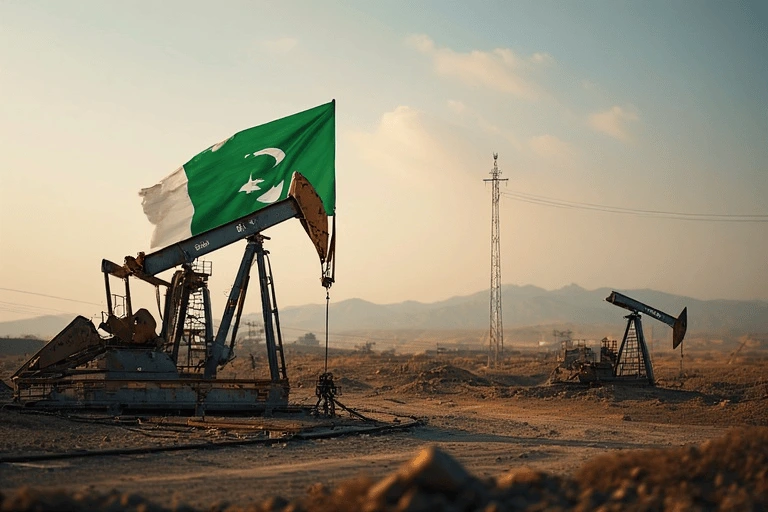Pakistan’s Oil & Gas Production Faces Significant Decline
Introduction
Pakistan’s oil and gas production is facing a significant and ongoing decrease, a trend that is occurs serious issues for both the country’s energy security and economic stability. According to a recent report Pakistan’s hydrocarbon production saw a huge down-fall in the tax year in 2025 with basic oil output falling by 12% year-on-year (YoY) and natural gas production decreasing by 8% year-on-year (YoY). This downturn is primarily attributed to a combination of factors, including policy missteps formation inefficiencies and an oversupply of imported fuels.
The data paints a harsh picture for Pakistan’s hydrocarbon production. In the end this year 2025, the decrease was even more declared. Oil production decreased by 8% quarter-on-quarter (QoQ) and 15% year-on-year (YoY), but at the same time gas production decreasse by 7% (QoQ) and 10% (YoY). Major oil and gas fields including the critical Tal Block and Sui gas field have been affected with some experiencing production drops of over 50%. This consistent decreasing is forcing the country to depend on expensive imported fuels, which adds a significant burden to Pakistan’s foreign exchange reserves.
The Regasified Liquefied Natural Gas (RLNG) Problems and Their Impact
The main factor of this decline is the oversupply of imported regasified liquefied natural gas (RLNG). The government’s policy of prioritizing RLNG in part due to “take-or-pay” agreements with international suppliers has created a scenario where local production is being reduced. The government also imposed an “off-grid levy” on industrial gas consumption making it more expensive than grid electricity. This policy shift demoralize industrial users from using gas reducing demand and forcing local producers to cut back on output.
The economic pressure from high import costs and declining domestic production directly affects the value of Pakistan’s currency and its financial markets. This unstable economic environment makes precious metals an urgent indicator of market confidence. Investors constantly turn to them during times of financial hardship. For up-to-date data on how the currency weakness is impacting prices, check the daily Gold Rate in Pakistan, and you can also find current Silver Rates in Pakistan to inspect market opinion, as the price of both Silver Prices in Pakistan and Gold Price in Pakistan reacts strongly to foreign exchange fluctuations.
This under reliance on imported regasified liquefied natural gas (RLNG) has a direct and negative impact on Pakistan’s Oil and Gas Production. Topline Securities estimates that this increased dependence on imported fuels added over $1.2 billion to Pakistan’s foreign exchange burden in 2025. This not only strains the country’s finances but also makes it highly exposed to global fuel price volatility and potential supply disruptions.
A Discourage Vs A Flicker of Hope
The outlook for the upcoming tax year 2026 remains desolate. Without major policy changes or new investments in research and production (E&P) it might be the third straight year of declining Pakistan’s Oil and Gas Production. Projections suggest that oil production will likely fall to 58,000-60,000 barrels per day (bpd) and gas output could drop to 2,750-2,850 million cubic feet per day (mmcfd).
However, there is a potential path to recovery. The government is scheduled to reconsider its long-term regasified liquefied natural gas (RLNG) supply agreement with Qatar in March 2026. Proficient believe that securing more flexible agreement terms could create an opportunity for exploration and production (E&P) companies to increase their production. To take this opportunity these companies must prioritize field maintenance and capital investment. Leveling the use of imported LNG with eco-friendly benefits in local production is seen as essential for confirming Pakistan’s energy security and stabilizing its foreign exchange reserves in the long run.











